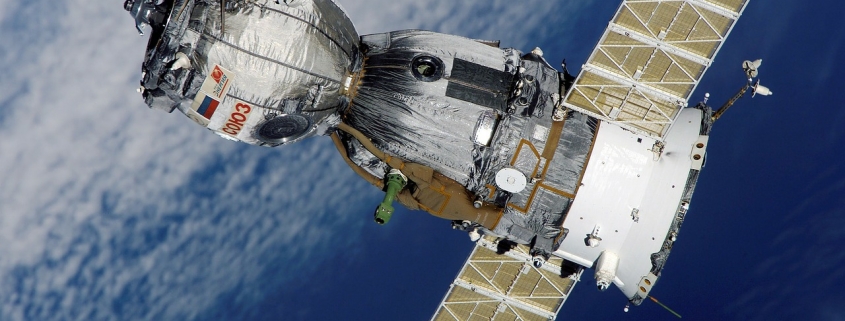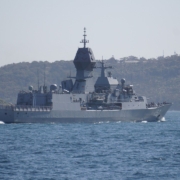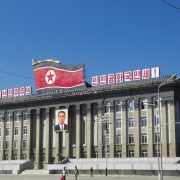What was Ronald Reagan’s Strategic Defense Initiative?
Topic of Study [For H2 and H1 History Students]:
Paper 1: Understanding the Cold War (1945-1991)
Section A: Source-based Case Study
Theme I Chapter 3: End of Bipolarity [US policy of renewed containment and confrontation]
Historical context: Peace through strength
After the Soviet invasion of Afghanistan in 1979, the short-lived Détente was over, ushering a time know as the ‘Second Cold War‘. Then, US President Ronald Reagan assumed a more confrontational stance against the Soviet Union, asserting that the ‘Evil Empire’ had to deterred through military build-up.
By the early 1980s, there were anti-nuclear demonstrations taking place in the USA, which had put pressure on Washington to support ‘nuclear freeze’. Yet, Reagan opposed this approach, claiming that the Soviet Union’s aggression would put the USA and its people in grave danger.
I know too that many of you seriously believe that a nuclear freeze would further the cause of peace. But a freeze now would make us less, not more, secure and would raise, not reduce, the risks of war.
[…] It is that we embark on a program to counter the awesome Soviet missile threat with measures that are defensive. Let us turn to the very strengths in technology that spawned our great industrial base and that have given us the quality of life we enjoy today. What if free people could live secure in the knowledge that their security did not rest upon the threat of instant U.S. retaliation to deter a Soviet attack, that we could intercept and destroy strategic ballistic missiles before they reached our own soil or that of our allies?
An excerpt from US President Ronald Reagan’s speech entitled “Address to the Nation on Defense and National Security“, 23 March 1983.
A “Star Wars program”: Fiction or Reality?
During the historic speech, Reagan had revealed to the American people that a technologically-advanced missile defense system was being developed, which was later known as the Strategic Defense Initiative (SDI). Notably, when Reagan was a governor of California in the 1960s he became very interested in the concept of directed-energy weapons (DEWs), which was briefed by physicist Edward Teller. Teller mentioned that DEWs, which included lasers and microwaves, could act as an effective defense against a nuclear attack.
To begin with, SDI became an easy object of derision in the British press. The Guardian reported that there was ‘little hope’ of SDI ever succeeding, and a generally dismissive tone dominated that newspaper, labelling SDI an unrealistic fantasy. Cartoons poked fun at Reagan’s initiative, quickly labelled ‘Star Wars’ by US Senator Ted Kennedy, and reiterated on Time magazine’s front cover in April 1984. Of course, SDI was officially declared to be defensive in nature, which was a useful imaginary to promote.
An excerpt from “NATO and the Strategic Defence Initiative: A Transatlantic History of the Star Wars Programme” by Luc-André Brunet.
On 25 February 1981, President Reagan signed the National Security Decision Directive (NSDD) 12, known as the Strategic Forces Modernisation Program. The Directive had authorised an improvement of strategic defenses and the development of ‘ballistic missile defense systems’.
The proposed SDI program was a space-based missile defense system that could protect the USA from a large-scale nuclear attack. It involved the use of space-based lasers, which reminded some of the popular science fiction film ‘Star Wars’ by George Lucas. (Interestingly, the trilogy was released in 1977, 1980 and 1983).
Although the program sounded absurd and unrealistic, the Reagan Administration was intent on developing the system to nullify the Soviet Union’s ability to make a first strike, thus giving the USA a chance to end the Cold War.
On the other hand, the Kremlin viewed the SDI as a serious breach to global peace and security as Reagan’s plans signalled the US decision to restart the arms race in the early 1980s.
And critics were certainly correct in predicting that Reagan’s proposal would anger the Soviet Union. Four days after Reagan’s surprise speech, Yuri Andropov (1914-1984), who had replaced Brezhnev, called SDI “irresponsible” and “insane”. He said the initiative was “putting the entire world in jeopardy.” He predicted it would “open the floodgates of a runaway race of all types of strategic arms, both offensive and defensive.”
An excerpt from “America’s Star Wars Program” by Ann Byers.
What can we learn from this article?
Consider the following question:
– How far do you agree that Reagan was responsible for the end of the Cold War?
Join our JC History Tuition to learn more about the End of the Cold War. The H2 and H1 History Tuition feature online discussion and writing practices to enhance your knowledge application skills. Get useful study notes and clarify your doubts on the subject with the tutor. You can also follow our Telegram Channel to get useful updates.
We have other JC tuition classes, such as JC Math Tuition and JC Chemistry Tuition. For Secondary Tuition, we provide Secondary English Tuition, Secondary Math tuition, Secondary Chemistry Tuition, Social Studies Tuition, Geography, History Tuition and Secondary Economics Tuition. For Primary Tuition, we have Primary English, Math and Science Tuition. Call 9658 5789 to find out more.











